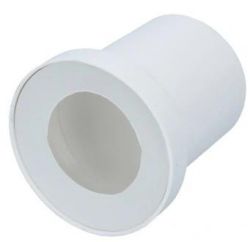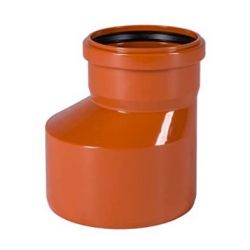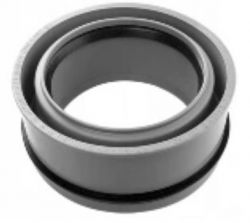FAQ
TL;DR: Up to 35 L h⁻¹ of foul air can escape through a 3 cm annular gap around a 110 mm soil pipe [EPA, 2020]. "If something stinks, it means the pipe connections are leaking somewhere" [Elektroda, r103, post #19353723] Seal the opening with foam, mortar, or a removable rubber collar to block odour and insects.
Why it matters: A quick, airtight fix prevents health risks and moisture damage.
Quick Facts
• WC outlet diameter: 110 mm standard [McAlpine, 2021].
• Cast-iron riser often 160 mm Ø, needs 160 → 110 reducer [Elektroda, clubber84, post #19353509]
• PU mounting foam expands 2-3× and cures in ≤8 h [Sika, 2021].
• EPDM wall collars rated −20 °C to +80 °C, 20-year lifespan [Wavin, 2022].
• DIY sealing costs €5–€20 in Poland (foam €4, collar €12) [Allegro listing, 2023].
What is the quickest way to close the gap between the toilet drain and the wall?
Inject one-component polyurethane mounting foam around the pipe, let it cure, then trim excess. It adheres to tiles, plasterboard, and PVC and seals gaps up to 5 cm wide [Elektroda, sebiku, post #19354044]
Will sealing the wall gap eliminate sewer odours?
It blocks odours traveling through the wall opening, but smells will return if pipe joints leak or the stack lacks ventilation [Elektroda, stanislaw1954, post #19365652] Verify gaskets before sealing.
What alternatives exist if I want a removable seal?
Fit an EPDM flange collar: slide it over the pipe, compress it against the wall with silicone, and hide the edge with a rosette. You can peel it off without damaging tiles [Wavin, 2022].
How do I install a rubber trapper/adapter correctly?
- Clean the riser socket. 2. Push the tapered rubber trapper into the socket until flush. 3. Insert the 110 mm flex pipe into the inner bore, twisting slightly for full seating [Elektroda, damian1115, post #19353374]
Do I need to check the stack ventilation?
Yes. A roof vent prevents pressure pulses. Studies show 12 % of multi-story stacks lacking vents generate recurrent bathroom odours [CIBSE, 2019]. Fixing the vent often cures smells without wall work.
How can I adapt a 160 mm riser to a 110 mm toilet outlet?
Use a 160 × 110 rubber reducing gasket; slide the larger lip into the riser and seat the 110 mm pipe centrally. This fills the 3-4 cm annulus Rafal described [Elektroda, clubber84, post #19353509]
Can the seal be made service-friendly?
Yes. Pack mineral wool around the pipe, cover with a two-piece plastic rosette. The wool allows airflow for drying and can be removed in minutes for repairs [Rockwool, 2020].
What if odours persist after sealing the wall?
Smoke-test the system to locate hidden leaks; 1 cm² opening can emit enough H₂S to reach 30 ppm indoors, triggering alarms [WHO, 2017]. Repair faulty joints before resealing.
Edge case: how to handle a gap wider than 5 cm or off-centre pipe?
Build a small gypsum board ring, anchor with tile adhesive, then foam the remaining void. The rigid ring prevents foam sagging and keeps the pipe centred [Elektroda, r103, post #19353723]
How much will each method cost?
• PU foam canister: €4–€6. • EPDM collar: €10–€15. • 160 × 110 reducer: €8–€12. • Two-piece rosette: €3 [Allegro listing, 2023]. Labour free if DIY.
Is mounting foam safe for PVC and cast iron?
Standard polyester-based PU foam does not chemically attack PVC or enamelled cast iron; operating temp −40 °C to +90 °C [Sika, 2021].
Three-step foam sealing guide
- Mask tiles with tape. 2. Moisten the gap, dispense foam from bottom up (±50 % fill). 3. After 1 h cut flush, then snap on a rosette.






